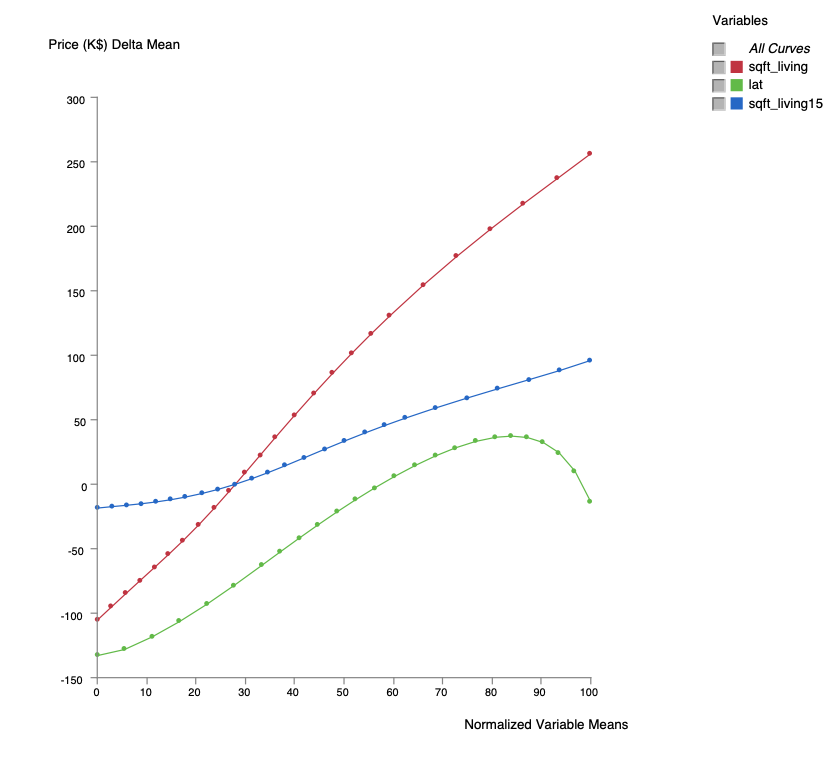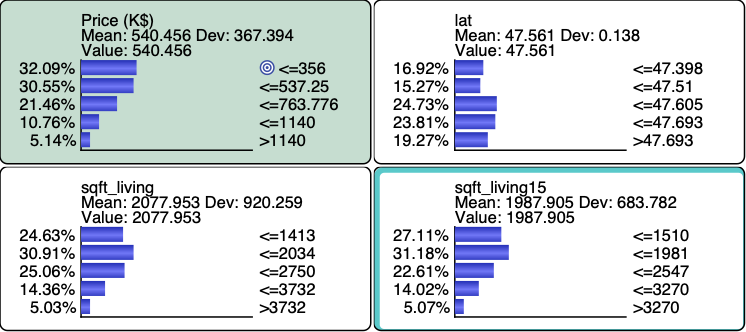Direct Effects on Target (9.0)
Context
Analysis | Report | Target | Direct Effects on Target

This feature estimates the causal effect of some variables (e.g. the Drivers) on the Target Node. We assume that all analyzed variables have meaningful numerical values associated with their states, which allow us to focus the analysis on their Expected Values (opens in a new tab).
The Direct Effect (opens in a new tab) of a driver on the Target node is estimated by slightly increasing the expected value of the driver (using Numerical Evidence) while holding fixed the probability distributions of all other confounders, and measuring the effect on the expected value of the Target node. The analysis can be considered causal because all marginal probability distributions are held fixed, except those of:
- nodes that belong to the predefined class Non_Confounder (opens in a new tab), and
- Not Observable (opens in a new tab) nodes that belong to the predefined class Factor (opens in a new tab).
New Feature: Overall Elasticity
The Direct Effects Report now contains the Overall Elasticity.
The estimation of this Elasticity is carried out by changing the way to compute the effect δy. Instead of measuring the driver's effect by adding a small δx to its marginal expected value, it measures the effect by comparing the posterior expected values of the Target node given the minimum and maximum driver's expected values.
Example
Let's suppose we have the following direct effect function (Analysis | Visual | Target | Target's Posterior | Curves | Direct Effects):

The Monitors below show the marginal expected values of the variables.

The Direct Effects Report now returns 5 metrics:

